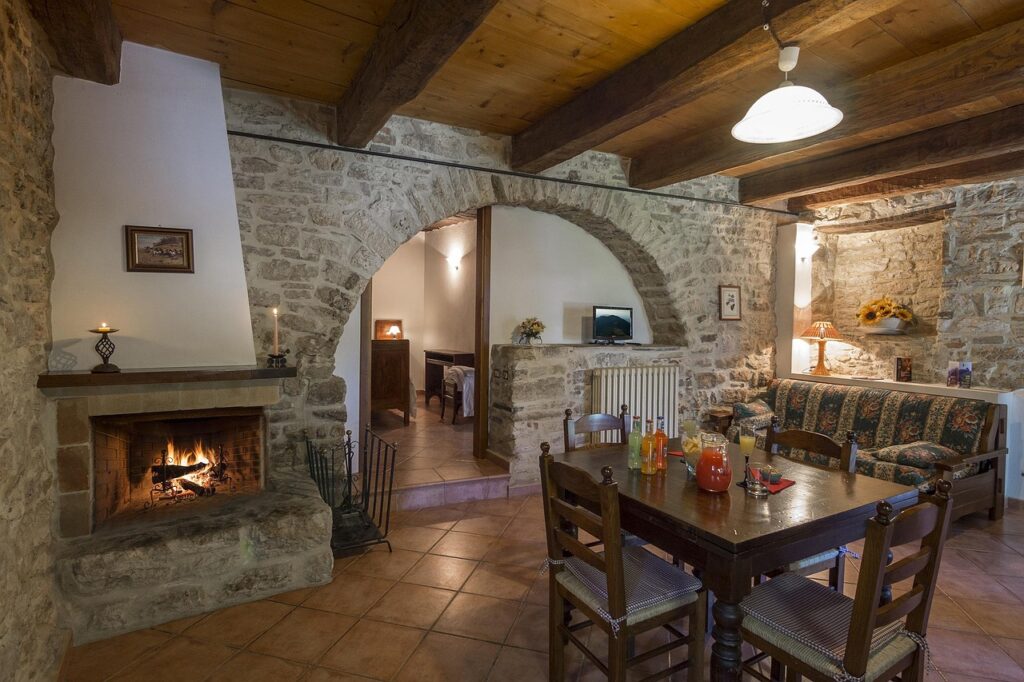
Toronto’s brutal winters attack chimneys like nothing else. Freeze-thaw cycles crack mortar joints and weaken stone. Snow and ice load chimneys beyond design limits. Carbon monoxide risks spike when vents freeze. Smart homeowners tackle chimney winter maintenance now to dodge disasters.
How Freeze-Thaw Breaks Chimneys Apart
Water is a chimney’s enemy number one. Rain and snowmelt seep into tiny cracks in mortar and brick. Then temps drop below zero. Water freezes and swells nine percent larger. This pressure cracks mortar wider and dislodges bricks.
Spring thaw brings leaks. Water drips into your home through walls and ceilings. Mold grows in damp spots. Rot spreads through framing.
Toronto temps ping-pong between minus-eighteen and five degrees. This bounces above and below freezing many times per winter. Each bounce stresses chimney joints. Mortar freezes at forty degrees. Damage multiplies with each cycle.
Warning Signals to Spot Fast
Walk around your home and look up. Spalling bricks—pieces falling off—signal freeze damage. Flaking, crumbling, or missing chunks mean water got inside and expanded.
Check mortar joints for gaps or crumbly bits. Efflorescence—white powder on bricks—shows water moving through stone. That’s your clue that more damage hides below.
Leaning chimneys spell trouble. Bent stacks mean internal damage from repeated freeze cycles. This is a safety hazard and needs fast pro help.
Missing chimney caps or crowns let rain funnel inside. Rust spots on dampers or firebox liners show water already invaded.
Prevention Steps That Save Thousands
Get a pro chimney sweep and inspection before late fall. Toronto pros cost one hundred to three hundred dollars but catch issues before winter hits. One visit avoids emergency calls at triple the price.
Waterproofing coatings seal chimneys and let them breathe. These products cost two to five hundred dollars and extend chimney life by decades. They’re tax-smart too—many Toronto programs offer rebates.
Check that your chimney cap and crown are intact. Caps cost one hundred to four hundred dollars to replace but block snow and ice from clogging vents. Cracked crowns need rapid repair—they’re the hardest hit during freeze-thaw.
Clear gutters and downspouts so melt-water drains away from chimney bases. Debris-clogged gutters force water to pool and seep upward into chimney bases.
Creosote Buildup Creates Fire Risk
Every wood fire leaves behind creosote—a gummy, flammable layer. Buildup gets thick and hardens on flue walls. In winter, when you run fires often, creosote speeds accumulation.
Buildup blocks flue gases, forcing them back into your home. Carbon monoxide rises. Fire danger climbs. Efficiency drops, so you burn more wood for the same heat.
Clean chimneys once yearly, ideally before late fall. Professional sweeps remove creosote and inspect liners. Costs run one hundred fifty to three hundred dollars. Ignore this and you risk a seven-thousand-dollar chimney rebuild plus potential fire damage.
Repair Costs and Timing
Tuckpointing mortar joints costs ten to eighteen dollars per square foot. Small jobs run three hundred to six hundred dollars. Full chimneys might hit two thousand or more.
Crown repair ranges two hundred fifty to six hundred dollars. Waterproofing runs two hundred to five hundred. Full rebuilds—when damage is severe—hit two to six grand or higher.
Fall is prime time for repairs. Spring demand also surges after winter damage appears. Winter itself poses challenges for mortar work—cold blocks curing.
Smart timing? Late August through October. Get work done before winter tests it.
Your 2026 Action Plan
- Schedule a chimney sweep and pro inspection by mid-October
- Apply waterproof sealant to your chimney crown and sides
- Replace missing or cracked caps
- Clear gutters and downspouts before first freeze
- Burn dry wood only—wet wood makes thick creosote
Wrapping Up
Toronto winters won’t stop. Freeze-thaw cycles will keep hitting chimneys hard. But proactive maintenance cuts damage risk seventy percent or more.
One chimney sweep, one waterproofing coat, and one crown check cost about one thousand dollars combined. One emergency rebuild costs six to ten times that.
Smart homeowners invest now to dodge costly woes later.





